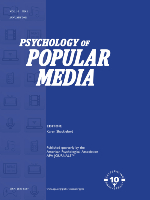Excerpt:
This longitudinal study from Germany showed that both male and female university students who watched more pornography were more likely to hold sexual scripts for consensual sex that put them at a greater risk for sexual aggression and vulnerability to sexual victimization, such as engaging in casual sex, alcohol use, and the ambiguous communication of sexual intentions. They were also more likely to show these behaviors in their consensual sexual interactions. [Emphasis supplied]
Psychology of Popular Media
Abstract
Pornography has been postulated to be a problematic source of influence on users’ views about sexuality and sexual behavior, especially when it is perceived to be a realistic portrayal of sexual interactions. This longitudinal study examined the combination of frequency of use and perceived realism of pornography as predictors of young adults’ sexual scripts and sexual behavior. Specifically, we focused on facets of scripts and behavior for consensual sex, such as casual sex, alcohol use, and ambiguous communication of sexual intentions, that have been consistently related to an increased risk of sexual aggression perpetration and vulnerability to sexual victimization. In a three-wave study (Time 1–3 [T1–T3]) covering 23 months, 588 university students in Germany completed measures of pornography use and perceived realism, risky sexual scripts, and risky sexual behavior. In men and women, the frequency of pornography use predicted risky sexual scripts and behavior at T1 and indirectly at T2 and T3, controlling for prior risky scripts and behavior as well as concurrent pornography use and perceived realism. For men only, perceived realism of pornography was an independent predictor of risky scripts concurrently and indirectly at T2 and T3. The link of perceived realism of pornography with risky sexual behavior was positive for men, but negative for women.The interaction of frequency of use and perceived realism was nonsignificant. The implications for media literacy interventions about potentially harmful effects of frequent pornography use and the perceived realism of pornographic portrayals of sexual interactions are discussed. (PsycInfo Database Record (c) 2024 APA, all rights reserved)
Impact Statement
Using pornographic media contents may inform young adults’ cognitive scripts about consensual sex and their sexual behavior, especially when they are perceived to be realistic depictions of sexual interactions. This longitudinal study from Germany showed that both male and female university students who watched more pornography were more likely to hold sexual scripts for consensual sex that put them at a greater risk for sexual aggression and vulnerability to sexual victimization, such as engaging in casual sex, alcohol use, and the ambiguous communication of sexual intentions. They were also more likely to show these behaviors in their consensual sexual interactions. Greater perception of pornography as realistic predicted risky sexual scripts for men, but not for women.The link between perceived realism of pornography and risky sexual behavior was positive for men, but negative for women. (PsycInfo Database Record (c) 2024 APA, all rights reserved)
